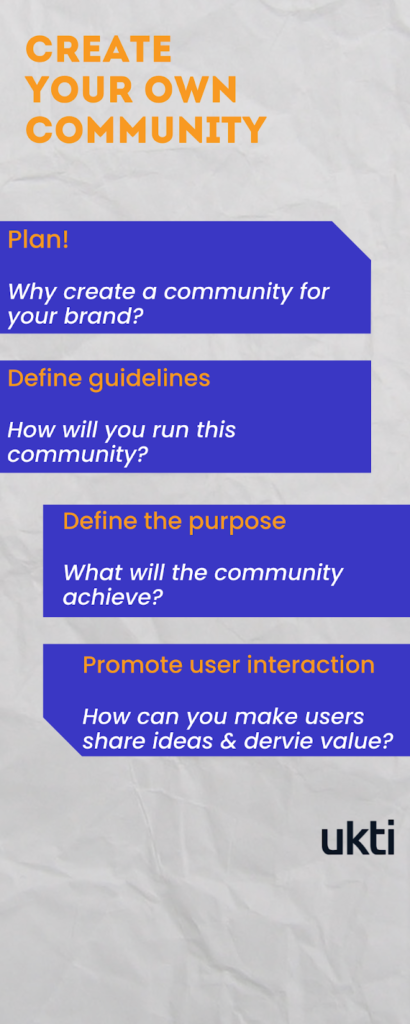Age-old African wisdom states, “If you want to go quickly, go alone. If you want to go far, go together.” Today, marketers have realized that community-led growth is the only way to go far.
While product-led growth strategies work wonderfully, they are just the first step. Augment your product-led growth with community-led growth, and you have a win-win situation all around.
Let us dive in and understand what community-led growth is and how it connects with product-led growth.
What is Community-Led Growth?
So, you’ve created an awesome product to solve your customer’s problems and found your product-market fit. You know how it is designed, how it works, and how to use it. You spend valuable hours selling, upselling, nurturing, and pleasing your customers with original content.
But have you considered how your customers experience the same product?
Now, suppose all your customers and potential customers have a community where they connect based on one shared interest: your product. This can be an online community on Facebook, a Quora space, or a Q&A forum on your website. Having such a space carved out can be incredibly helpful for you and for them.
Consider the following situations:
- User A loves your product and wants everyone in the community to know how he uses it. Several others chime in, sharing their unique experiences.
- User B is a new customer and has trouble figuring out a specific feature of your product. He posts on your community’s platform and gets hundreds of replies that help him troubleshoot.
- User C posts which feature he would like in your product, and everyone else agrees enthusiastically.
- User D has not purchased your product yet, but reading reviews and opinions on the community forum encourages them to do so.
- An industry expert from your team does an AMA (Ask Me Anything) session in the community where users can ask their burning questions directly to them.
Observing posts like these as a marketer can open a goldmine of insights for you. At a glance, you will be able to figure out accurately:
- Which are the best features of your product.
- Which features are hard to understand or access for users.
- What you can do to make the product better for your users.
- What are new or potential customers looking for
You will also never run out of content ideas and know exactly what makes your audience tick.
As your community builds up and the ideas pool in, your company also has the opportunity for growth. This is community-led growth!
Community-Led Growth and Product-Led Growth
Are community-led growth and product-led growth mutually exclusive? No. While both provide a unique value to your brand, they must complement each other.
Product-Led growth helps you leverage product usage and user experience to:
- acquire new users
- increase customer retention
- boost customer lifetime value (CLTV)
Community-Led growth is naturally the next step where you build and nurture a community of users, and this community impacts product development for the years to come.

What Defines a Community?
In this context, the community is an umbrella term for all the users of your product or people who may be associated with your product. But, ‘specific is terrific’ in SaaS. So, it helps to define a community for yourself.
Here are some directions you can think in while defining your community:
- Product-oriented (offering self-serve support, office hours, forum, etc.)
- Support-oriented newsletters, podcasts, webinars, live events
- Topic-oriented (offering peer support, AMA sessions, expert insights, etc.)
- Profession-oriented (offering career guidance, educational resources, job boards, etc.)
Example of Community-Led Growth – MOZ
The MOZ community project was started in 2017. Since then, it has grown into a thriving community of more than 5 lakh digital marketers. The community’s welcome message states:
“Connect with marketers & strengthen your SEO chops in a welcoming environment!”


Erica McGillivray, one of the community managers at MOZ, has shared her recipe for success.
According to Erica, you must first find out what you are passionate about in your industry. Then, understand the “why” of your brand to know what defines your audience and what doesn’t. And then, write about it! It is also vital to be active.
And as for community management, she states:
“Have community standards and be responsible for responding to and moderating comments on your blog. Promote it and be patient.”
Here’s Another Example of Community-Led Growth: HubSpot
If you are a digital marketer, you know the sheer prowess of HubSpot. From cutting-edge tools to information-rich blogs, they have carved out a space on the Interweb like no other brand. But did you know they have a community-led initiative as well?

Just have a look at their community page, and you will see how they highlight all the important stuff to attract new members to their already thriving community. For example, here is how they let newcomers know what’s going on:

How to Build a Brand Community of Your Own
If you want to take inspiration from MOZ and HubSpot and kickstart your community, here is what you should do.
#1 Plan!
Understand what your community will do, how it will operate, and what type of ideas will come from it. If you skip this step, you will end up with crickets and tumbleweeds.
#2 Define guidelines for the community
Define your community’s environment to keep the discussion relevant to your product, services, brand, and user base. Define clear community guidelines, assign admins, and have a dedicated team of moderators.

#3 Define the purpose of your community
Why are you creating this community? Jot down the purpose of the online space and stick to it.
Of course, you can have several purposes. But be clear about what is allowed and what is off-limits. You do not want users sharing news about your competitors, irrelevant products, or thing they’d rather post on their Facebook profiles.
#4 Encourage users to interact
Over time, communities are bound to grow and develop an ecosystem of their own. But you can accelerate its growth by promoting user interactions, having one-on-one interactions with users, and nurturing relationships.
Final thoughts
Are you ready to create your own community? Go ahead, and leverage your user base.
If you liked this article, check out other articles about how to nail product-led growth and how to find content-market fit.
About the Author

